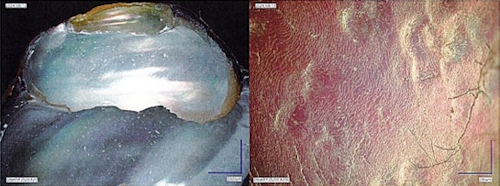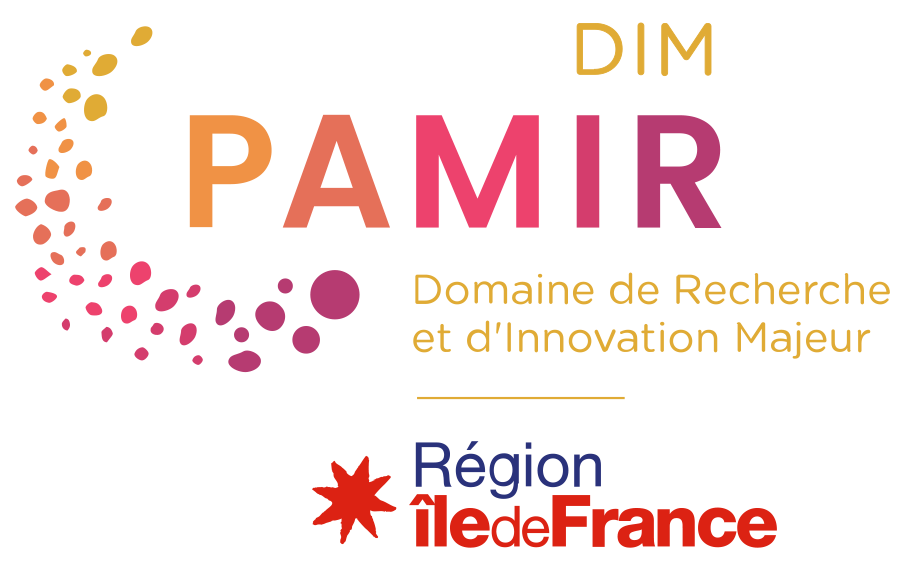
ORNEMents
Determination of the biological origin of mother-of-pearl in cultural heritage through the study of the characteristic and relevant microstructural elements using digital microscopy
Scientific responsibility :
- Michel Jordan
Methodological axes :
Thematic fields :
Disciplinary sectors :
Partnership :
Funding :
- DIM PAMIR
Project ID : IDF-DIM-PAMIR-2025-11-012
Summary :
Nacre or Mother-of-pearl is an organic-inorganic composite material produced by some molluscs as an inner shell layer. Its structure is lamellar (layered), consisting of aragonite plates tightly bound together by a thin organic cement. Different stackings of aragonite plates can be observed under a microscope, with “brick” and “column” structures, depending on the mineralization mechanism of mother-of-pearl in gastropods and bivalves. It is also this microstructure that gives it its iridescent appearance . This optical property makes it a prized material in cultural heritage, which should therefore be documented by identifying it in the least intrusive way possible in order to gain a better understanding of the object’s manufacturing history, but also to optimize restoration protocols. The identification of the biological origin of mother-of-pearl in a heritage context is gene rally based on visual criteria such as colour. However, this identification can be complicated by the treatments that mother-of-pearl objects may undergo. No study has yet focused on identifying the origin of mother-of-pearl in heritage objects by studying their microstructure. This internship aims to establish a protocol for acquiring images and studying the microstructure of reference mother-of-pearls and mother-of-pearl objects using digital microscopy. By isolating possible specific and relevant microstructural characteristics, we hope to produce an initial classification of the biological origin of mother-of-pearl in cultural heritage.
Credit and Legend: Images obtained using a Keyence VHX-7000 digital microscope of the pearly interior of two marine gastropods: on the left, a gibbula (x20) and on the right, an abalone (x200) (© INP, Elsa Perruchini).

